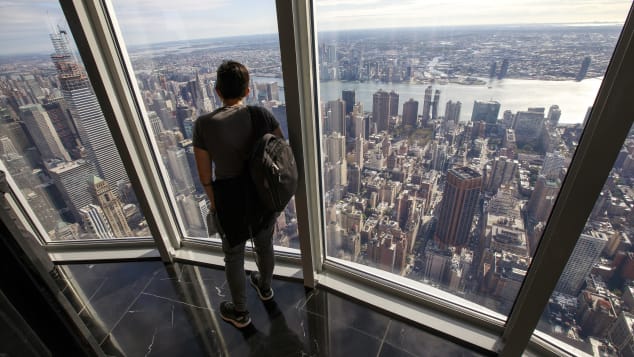 “WE WILL devote all our efforts to ending the suffering of all Argentines,” declared Alberto Fernández, Argentina’s president-elect, before a vast crowd in Chacarita, a working-class neighbourhood of Buenos Aires. “We will be the Argentina that we deserve to be.” Mr Fernández was celebrating his victory over the incumbent president, Mauricio Macri, in Argentina’s presidential election on October 27th. But Mr Macri raised similar hopes after his election four years ago, which ended 14 years of rule by the Peronist movement to which Mr Fernández belongs.
“WE WILL devote all our efforts to ending the suffering of all Argentines,” declared Alberto Fernández, Argentina’s president-elect, before a vast crowd in Chacarita, a working-class neighbourhood of Buenos Aires. “We will be the Argentina that we deserve to be.” Mr Fernández was celebrating his victory over the incumbent president, Mauricio Macri, in Argentina’s presidential election on October 27th. But Mr Macri raised similar hopes after his election four years ago, which ended 14 years of rule by the Peronist movement to which Mr Fernández belongs.
The victory by the Peronists—who secured 48% of the vote against Mr Macri’s 40% with most of the votes counted—was narrower than expected but large enough to avoid a run-off vote in December. The question is whether they can do a better job of resolving the country’s chronic economic troubles than Mr Macri did.
The election offered voters an unappetising choice between two failed models. Mr Macri’s supposedly business-friendly presidency is ending with a shrinking economy, a falling currency and with rising prices. But the years of populist rule by the Peronists that preceded it were equally calamitous. The author of that disaster, Cristina Fernández de Kirchner, was Mr Fernández’s running mate (but is no relation) and will now be vice-president. When it became clear after a primary vote in August that the Fernández duo would probably win, the peso plunged by 25% and inflation surged.
The confirmation of their victory will do little to settle nerves. Even as the winners were chalking up the votes on October 27th, shopkeepers were marking up prices, anticipating further devaluation and higher inflation. Mr Macri, conceding defeat, invited the president-elect immediately to the Casa Rosada, the presidential palace. The hope is that the two can agree a “transition package” to steady the markets until Mr Fernández takes office in December. They have already signed off on tighter currency controls, announced by the central bank, limiting dollar purchases to just $200 a month, compared with the $10,000 limit imposed in September, to limit a run on the peso.
The election result did not resolve the question of which Fernández would truly succeed Mr Macri: Alberto, the president-elect, or Cristina, the charismatic former president who elevated Alberto from backstage operative to presidential frontman. “The unknown is what is going to be the real relationship between the two of them as the Peronists come back,” said Eduardo D’Alessio, a pollster.
Mr Fernández served as the cabinet chief of Néstor Kirchner, Cristina’s late husband and Argentina’s president from 2003 to 2007. That government oversaw a robust recovery from the default and distress of 2001-02. It strong-armed most of Argentina’s creditors to accept a deep discount in the value of their bonds, repaid the IMF early and boasted a string of budget surpluses. It is now known as “Good Kirchnerism”.
Mr Fernández’s running mate, however, is associated with the bad sort of Kirchnerism. Having succeeded her husband as president, Ms Fernández presided over years of economic mismanagement, culminating in a bloated public sector, gaping fiscal deficit and an inflation rate that was so alarming her government refused to measure it properly.
Which kind of Kirchnerism won Sunday’s election? The early signs are mixed. In the closing days of the campaign, Mr Fernández insisted he and his running-mate were inseparable. “But that was the candidate speaking,” said one of his inner circle, as the president-elect celebrated his victory. “He knows he has to cut the cord if he is to stabilise this economy, and win time for recovery from this economic mess.”
One clue to his intentions will be his choice of treasury minister. The two leading candidates, Matías Kulfas and Guillermo Nielsen, are both veterans of the Kirchners’ long rule. But their economic reputations differ. Mr Nielsen has encouraged bondholders and the IMF to show patience with the new government. He cites the example of Uruguay, which repaid its creditors after its 2002 crisis slowly but fully, without subjecting them to a “haircut”. The model may not work in Argentina given the size of its debts (approaching 90% of GDP, according to JP Morgan, a bank) and weakness of its currency. But investors have welcomed the sentiment.
Mr Nielsen, who led Argentina’s negotiations with the IMF from 2003 to 2005, may have to reprise that role as Argentina seeks to manage its debts, including its existing $57bn loan from the fund. With Mr Nielsen likely to focus on debt management, Mr Kulfas appears to be the favourite for the top economic job. Those who know him describe him as a traditional Peronist in his economic thinking. “So expect protectionism, interventionism, strict currency controls to limit capital flight,” said a former senior official.
A little more conversation
Other election results will also have a bearing on the struggle for power within the Peronist movement. The province of Buenos Aires, home to almost 40% of Argentina’s population, elected Axel Kicillof as governor. A former minister of the economy under Ms Fernández, he will have an influential voice. And it is not an entirely reassuring one. “The economic situation we inherit today represents scorched earth, the ultimate failure of neoliberalism,” Mr Kicillof declared at the Peronists’ victory celebration, using the sort of language that scares markets.
Other election results will also have a bearing on the struggle for power within the Peronist movement. The province of Buenos Aires, home to almost 40% of Argentina’s population, elected Axel Kicillof as governor. A former minister of the economy under Ms Fernández, he will have an influential voice. And it is not an entirely reassuring one. “The economic situation we inherit today represents scorched earth, the ultimate failure of neoliberalism,” Mr Kicillof declared at the Peronists’ victory celebration, using the sort of language that scares markets.
Even so, other results suggest those scorching “neoliberals” may still have a say in how Argentina is governed. A member of Mr Macri’s party won re-election as mayor of the city of Buenos Aires by an overwhelming margin. And the populous provinces of Córdoba, Santa Fe and Mendoza also gave decisive support to Mr Macri’s alliance. As a consequence, his coalition looks likely to form the largest group in the lower house (although Mr Fernández’s alliance will control the senate).
“The good news is we have two broadly based coalitions coming out of this,” concluded Sergio Berensztein, a political analyst. The Peronists will have to seek allies rather than berate their enemies. With luck, Mr Macri will have left a political legacy of “conversation, not conflict”, Mr Berensztein notes.
From The Ecomomist





















